Barley Field

We cannot find the original field name for this meadow but we know it was ploughed in the war for barley to be grown; Joe, who remembered ploughing it by horse power also remembered hitting a ridge of rock and breaking his ribs as the plough jammed and he hit the handles. Roe deer spend a lot of time on the reserve and we usually have the pleasure of seeing twin fawns in the spring.
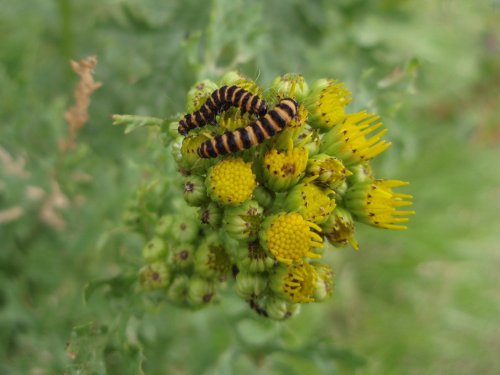
Ragwort is a good pollen and nectar plant but is toxic to grazing stock. The cinnabar moth caterpillar here is able to absorb the toxic alkaloids so it is poisonous too. The black and yellow strips serve to warn predators of the danger. Likewise the black and yellow colour of bees, wasps and their mimics give out the same message warning that some of these insects can harm by stinging; the mimics obviously are ‘pretending’. We keep the ragwort contained out of harms way of grazing winter stock by selective weeding (wear gloves – it is toxic to humans, even through skin).

The reserve provides a huge crop of berries that feed the birds in cold weather: birds are particularly attracted to red. By laying the hedges in rotation we re-invigorate the hedging but always have hedges that are mature enough to flower and fruit.
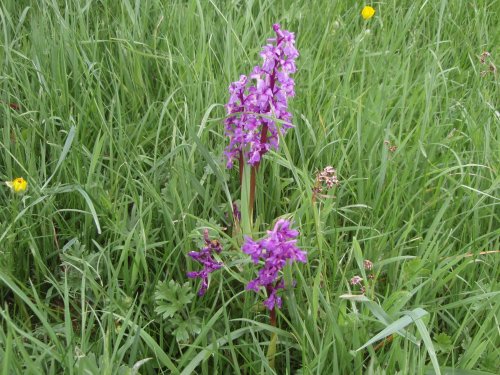
Early purple orchid (Orchis mascula). We do not have as many of these as we would like but we hope they will slowly appear. Ploughing and fertilising the field in the war caused the loss of the central area of semi-natural grassland but the field has wide ‘intact’ margins with orchids, cowslips, scabious, oxe eye daisies and knapweed and with appropriate management we are watching these spread slowly. The centre of the field was carpeted with ragwort (see Peter on our header picture).

Although the fields look quite ‘wild’ we work hard in the autumn, winter and early spring to manage the land appropriately. So far we have found and seen frogs, toads, lizards and adders.
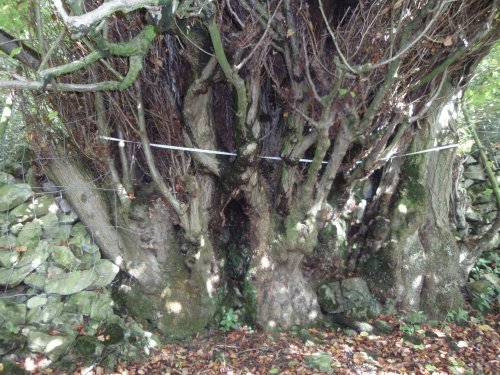
We have many old and mature trees; huge veteran beeches, oaks and ash. This is the trunk of our biggest tree, a small leaved lime (Tilia cordata). Lime flowers late (June/July) and was probably an important nectar source for honeybees when man probably brought his bees to these forested islands after the last ice age.
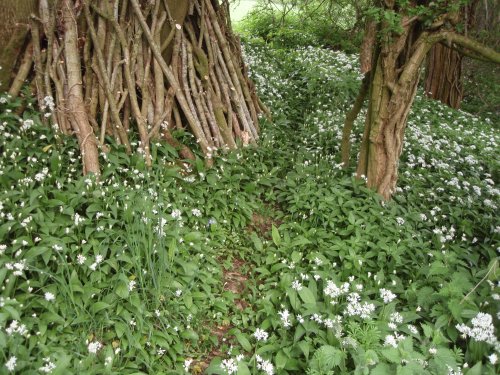
Wild garlic or ransoms grow under the wooded margins in dappled shade. When we lay the hedges we only burn the twigs and small branches, stems of any width are saved as shown here, seasoned for 2 years, and used for woodburning stoves. Help us on the reserve and you are offered fuel in return!

This is what happens to the Lyth valley after several days of heavy rain. The valley bottom used to be a raised peat bog but most of it has been cut, leaving only isolated areas of the original raised peat. Many of the fields are long and narrow, a relic of the old peat cutting rights. We are fortunate to have one of these strips as part of our reserve.
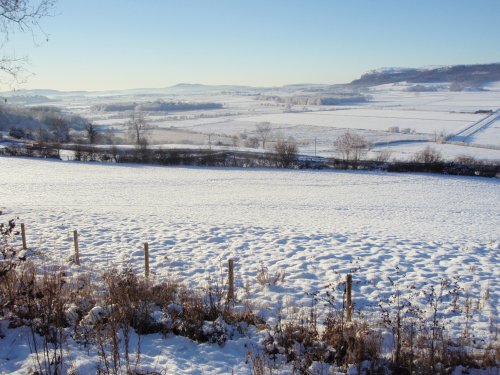
This is almost the same view as the one above but on a beautiful winter’s day. The azure sky is unusual here. The hay meadow is in the foreground with Intake to the left.



